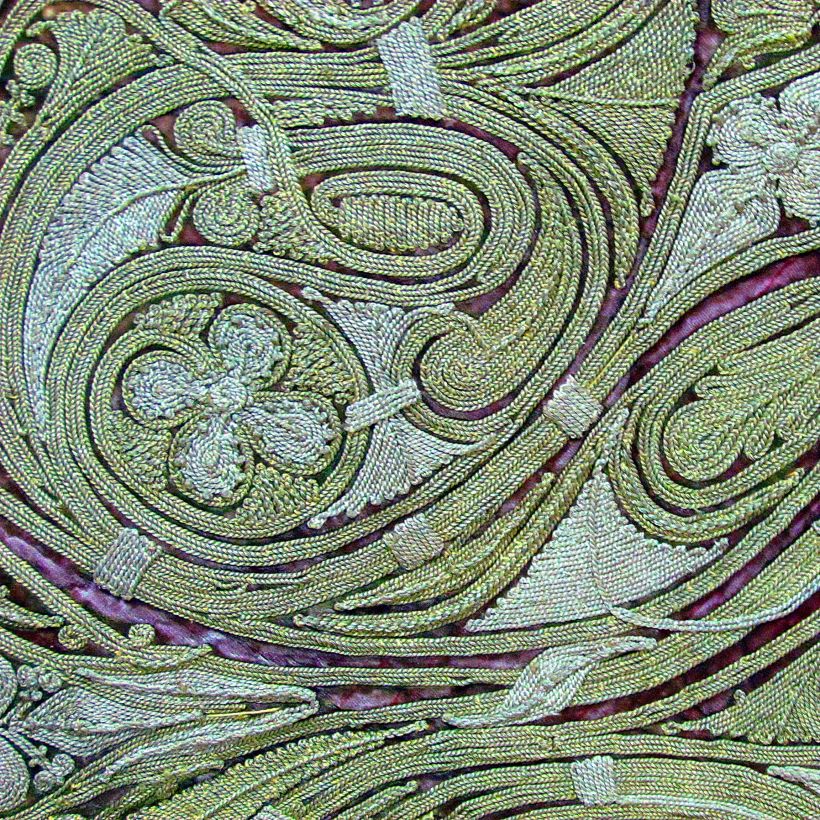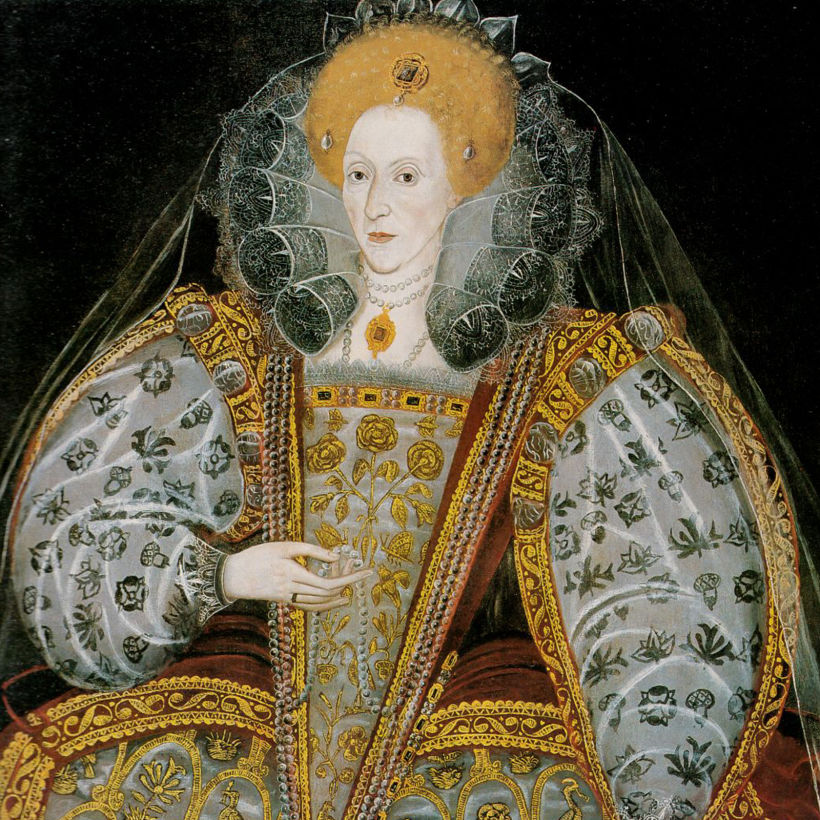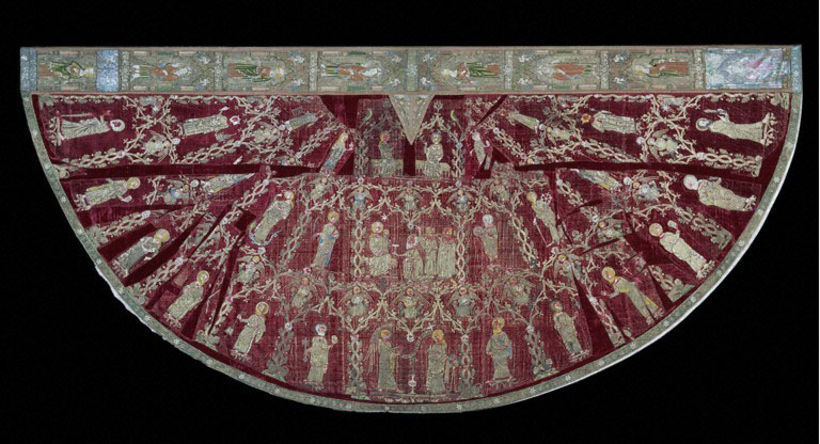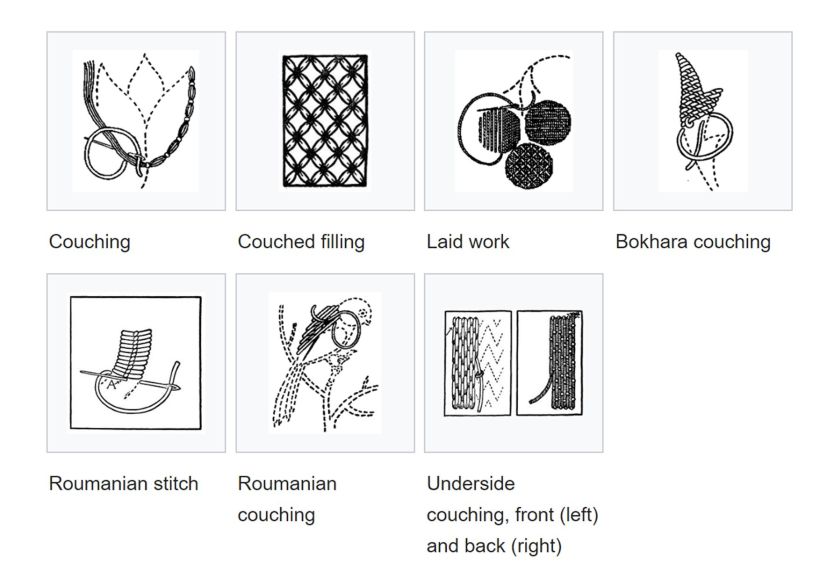What Is Goldwork Embroidery?
Learn about this exquisite ancient embroidery technique
Goldwork is a type of embroidery created using metal threads. An ancient technique, tracing back to a time when precious fabrics and threads made their way from East to West through the aptly named Silk Road, it has experienced a revival in recent decades.
In goldwork, the metal thread plays with light and adds beautiful qualities to the embroidered piece, and gives an added stiffness to the fabric.


History
Goldwork was created in Asia over 2000 years ago, and many representations of it are found around the world. Over the centuries, it has been used for fine church vestments and art embroidery. Beautiful examples appear in the tombs of the pharaohs of ancient Egypt and countries such as Italy, Babylon, Greece, India, and Persia and on the beautiful gowns of the emperors of China and Japan, a testimony to the countries’ skillful handicraft connected to their secret silk-making history.


Opus Anglicanum
Goldwork became especially popular in medieval Europe. Opus Anglicanum, or English Work, was coined in the 13th century and describes the luxurious embroidery of silk, gold, and silver thread made in England. It was exported to the courts and churches of Europe, where it adorned vestments and hangings aimed at inspiring awe and devotion.
An impressive exhibition at London’s Victoria and Albert Museum recently collected pieces from all over Europe that had been exquisitely handcrafted in England in that period, celebrating the tools, material, and people who made them.

Types of metal thread
There are numerous types of threads used in goldwork to create various effects. They have never been entirely made of gold, and are often made of different metals.
- Passing. The most common thread, it consists of a thin strip of metal wound around a core of cotton or silk.
- Japanese Thread. A shiny, synthetic thread that will not tarnish, it is a cheaper alternative to passing.
- Purl. A fine wire coiled around a triangular needle to give it a shiny faceted texture, it comes in different formats, such as bright check, wire check, smooth and rough.
-Rococo and the similar Crinkle cordonnet. These threads are made of wire tightly wrapped around a cotton core, with a wavy or kinked appearance.
- Couching thread. Wavy in appearance, it is a core thread wrapped with a fine metal thread.
- Twist is a 3-ply twisted thread with a textured appearance. Each ply is a core thread wound with a thin metal wire.
Paillettes or spangles (sequins of real metal), small pieces of appliquéd rich fabric or kid leather, pearls, and real or imitation gems are commonly used as accents to embellish goldwork pieces.

Technique
The technique to apply goldwork embroidery is mainly couching, whereby the metal thread is laid across the surface of the fabric and then fastened with small stitches of a different yarn, usually of fine silk. A tool called a ‘mellore’ or a stiletto are used to help position the threads and create the holes needed to pull them through.

Contemporary goldwork and Haute Couture
Thanks to technology and the availability of plastic sequin waste, metallic leather, and other new materials, goldwork has evolved into new techniques and less traditional styles and designs. Completing a goldwork embroidery requires skill and time, and materials are still expensive. Furthermore, the aftercare of the delicate threads is more complicated than for different embroideries; therefore, this technique is still reserved for special occasions.
Garments executed with this elaborate adornment are sought-after and often seen on haute couture catwalks. Alexander McQueen, Dolce and Gabbana, and Versace, among others, have included the sumptuous effects of goldwork in their collections.
Here is a list of embroidery courses from our Domestika experts.









0 comments